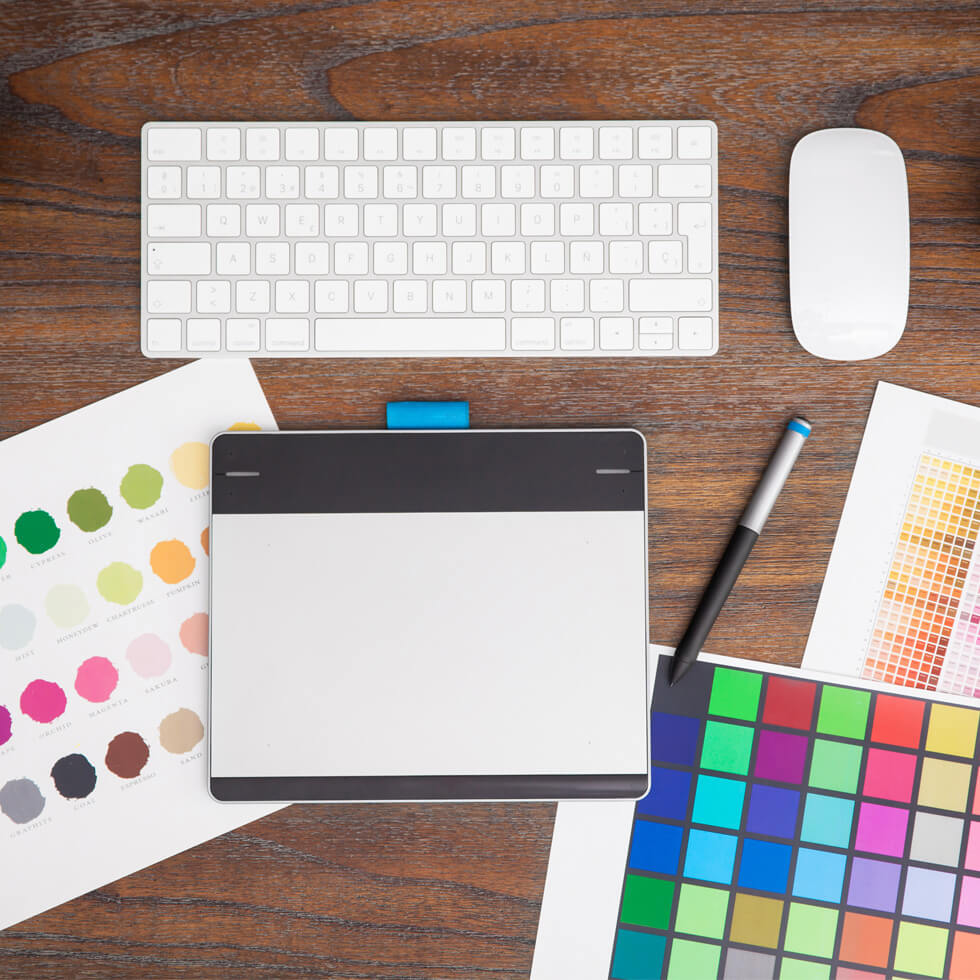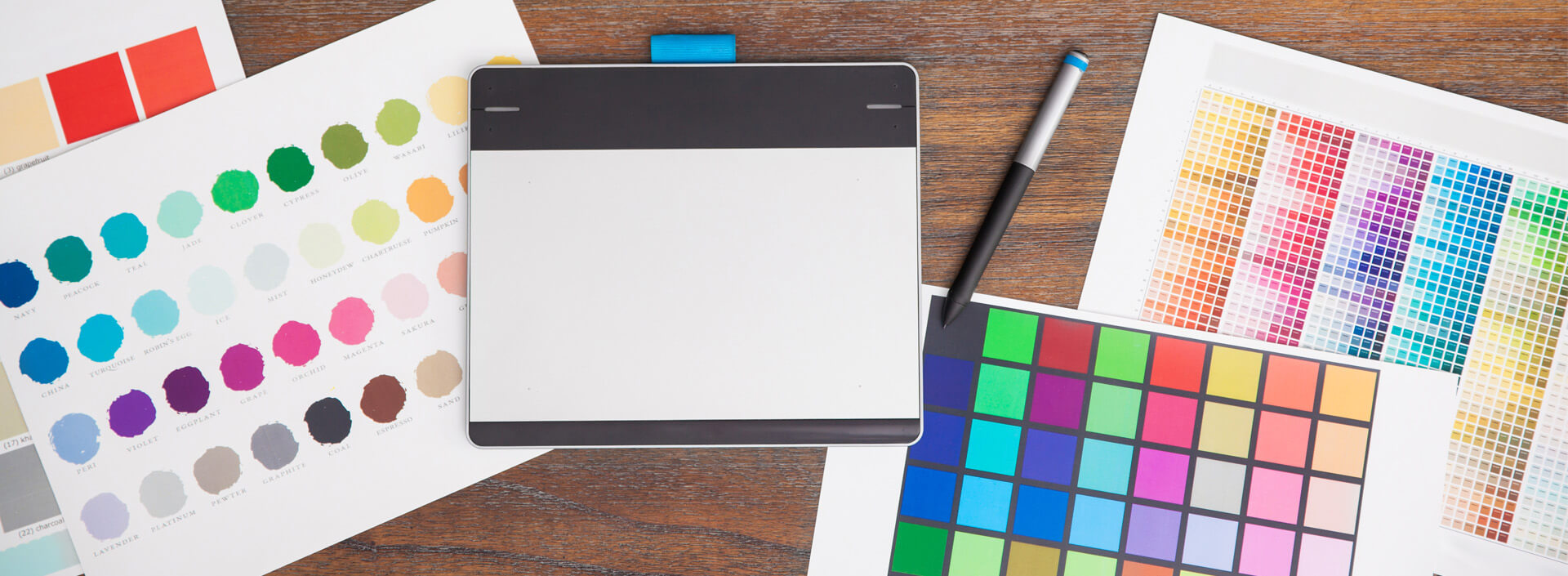

Frequently Asked Questions
- Wallpaper
- Wallmurals
- Flooring
Can I follow you on social media?
Absolutely! Excel Wall Interiors can be found by searching Excel wallpapers or by clicking on the social media icons on our website which will take you directly to our pages. We have pages on Facebook, Instagram, Pinterest, and LinkedIn. Our social media pages are also a great way to keep you up to date with new products, promotions and other news.
How long should it take for my wallpaper to dry out naturally?
For wall coverings to fully dry out it could take from 2 to 7 days, dependent upon the type of wall covering and other factors, such as wall surface, adhesive and atmospheric condition etc.
What causes shrink back (joints between drops opening)?
There are several reasons why wallpaper may shrink; the soaking time was not adhered to. It is absolutely necessary that the pasted lengths are left to soak for the time advised on the wallpaper label. Shrinkage occurs when the wall covering does not adhere to the wall properly before drying. Most wall coverings expand when wet and will try to shrink back on drying if the wall adhesion is poor or the paper is over-stretched. If the wall surface has been correctly prepared, the paper will soon adhere to the wall and should not shrink back whilst drying. Poor wall adhesion can be caused by poor wall preparation or by too little/too weak adhesive and the wall covering starting to dry out before the hanging commences. Shrink back also occurs when the room temperature is too high during the drying period. We always recommend that radiators are turned off to allow the wall covering to dry naturally. If the room temperature is too high, the rate of contraction (shrink back) will be accelerated and will exceed that rate of adhesion.
What causes bubbling or creasing on the wall after hanging?
There are generally two types of bubbles associated with hanging wall coverings which are either due to trapped air or more seriously, continued expansion: Air bubbles can generally be identified by their shape and will show themselves as a relatively ’round’ type bubble. These are caused when the paper is smoothed unevenly. The best way to avoid air bubbles is to gently brush the paper down the centre and then out to the edges as you work down the sheet. If bubbles are immediately identified as the wall covering is being hung then simply lift the wall covering from the bottom and re-brush/smooth it back down. Air bubbles will reduce slightly upon drying, but will not disappear completely. Pricking them with a needle and then attempting to brush them out after they have dried will almost certainly result in creasing. Expansion bubbles or creases are caused by continual expansion of the wall covering. This occurs when the paper has not been left to soak for the recommended time. They normally present themselves as short elongated bubbles, running parallel to the length of the wall covering and tend to look staggered across the sheet. It is highly unlikely that these type of bubbles will reduce upon drying or be removable once dry.
What type of paste should I use?
Most commercially available pastes will work for the majority of wallpaper projects. However, some heavy grade wallpapers might require a stronger adhesive. We do recommend Bartoline a high quality, easy to mix adhesive suitable for hanging all wallpaper types.
Do I need to order extra wallpaper for a pattern repeat?
Yes, you will need to consider the usable yield (the amount of each roll that is usable). The usable yield will depend on the length of your repeating pattern. The longer the pattern, the less usable yield. You will need to order additional rolls of wallpaper to match your design’s horizontal sequence.
How do I know how much wallpaper I need?
Generally, in order to calculate how much wallpaper you need, use the following steps: First, calculate the wall area by multiplying the height of the wall by the width. Second, calculate the area of the wall you will not be papering (i.e. windows and doors) by multiplying the height by the width of each area you will not paper. Third, subtract the unpapered area from the area of the wall. This will give you the wallpapering area. Fourth, divide the wallpapering area by the square footage of the wallpaper you would like to purchase. This will give you the total number of rolls needed to complete your project. However, you will need to consider extra paper for the pattern repeat and extra trimmings.
What size is a standard roll of wallpaper?
The standard size for a single roll of wallpaper is approximately 53 cm X 10m (57 sft). Depending on the wallpaper manufacturer, some rolls can be wider and also shorten in length. Before placing the order, make sure you check the size of the wallpapers.
Why is it important to prep my walls?
For the best possible result, ensure your walls are in their best condition prior to wallpapering. Be sure to remove all old paste residues. The old paste can stop the new paste from adhering to the wall properly. The wall must be roughened with sandpaper too. Emulsion paint can also result in application errors as again the paste cannot penetrate into the wall.
What type of wall paper works best for kitchens and bathrooms?
When working on a project for a kitchen or bathroom, you want to use wallpaper that is moisture resistant and unaffected by exposure to humidity. Vinyl coated or solid vinyl wallpapers are more durable and able to be washed which is ideal for dry areas in bathrooms and kitchens.
Can I use wallpaper on any wall?
You can use wallpaper over just about any absorbent surface such as drywall, concrete, paneling, masonry, new and old plaster, and even tile or laminate. For uneven, newly repaired, or slick surfaces, you will need to apply lining paper which provides a smooth surface for the wallpaper to adhere without blemishes. The key to a successful project is correctly preparing the walls and choosing the right kind of wallpaper.
Can I hang wallpaper over paint?
Yes, it can be done. But first, complete preparation must be taken care. Make sure the walls are smoothened, all dents and cracks are removed, and a primer is applied. Once the surface is smooth, wallpaper can be hanged easily.
What are the advantages to using wallpaper over paint?
There are many advantages to using wallpaper over paint to decorate your space. For instance, wallpaper can cover up imperfect or damaged walls as well as add texture and dimension in way paint simply cannot do. Wallpaper also offers a wide range of colors and complex patterns that would be difficult to create with a paintbrush.
In which dimensions are the Wall murals available?
Our range includes Wall murals in large dimensions until 388 x 270 cm as well as designs convenient for doors, for example 120 x 160 cm. Depending on dimensions, the murals consist of two, four or eight panels in vertical or horizontal format.
Is it possible to order Wall murals in a different size?
- If your favored motif is not available in a size you need, please feel free to contact us. We gladly individualize our motifs for you. Almost any format is possible. We produce these custom-made Wall murals with high-quality digital printing on non woven material. Delivery time is approximately 1 weeks.
Is it possible to produce a Wall mural with my own motif?
- We gladly produce a Wall mural with your own, individual motif. Due to digital printing it is possible to produce small quantities as well as individual items. Just send us your design in a digital format and we print an individual Wall mural on high-quality non woven material. The quality of data is crucial for this procedure. Please feel free to contact us. Delivery time is approximately 1-2weeks.
Which paste should I use to apply a Wall mural to the wall?
We recomend Bartoline.
Are Wall murals washable?
If you would like to remove excess paste or little smudges, this is conditionally possible. Please use a moist foam or rag (moist but not soaked!!) and remove smudges carefully by dabbing off. Please use only lukewarm water, no cleanser!
Is it possible to apply Wall murals in wet rooms or outdoors?
In principle our Wall murals are made for indoors and should not be constantly exposed to moisture or wetness.
What should I do, if I have bubbles after applying the mural?
After placing a panel of the Wall mural on the wall, remove all bubbles by stroking them carefully from the centre to the edges. Should there still be small bubbles after applying the mural, you can prick them with a tenuous needle so that the air can get out of the bubbles. Please work very carefully!
Can I reorder particular panels of the Wall murals?
Because of conditions of production it is merely possible to order whole motifs.
How should I prepare the surface of the wall?
The wall surface has to be prepared in the same way as for ordinary wallpaper: Rough areas have to be eliminated; the ground should be plane, dry and free of dust, oil-based primar or any previous wall covering. The ground should be able to assimilate moisture to enable a drying.
Is it possible to remove a Wall mural and apply it again?
Even after years, it is possible to remove a Wall mural from the wall. At this you have to work with much water to deglutinate the mural. Nevertheless removing the panels is not possible without leaving residues on the wall. You cannot apply the mural once again.
What happened if the particular panels have different sizes resp. the edges of panels do not match?
After pasting a panel, allow the paste to soak for 3 minutes before applying the panel to the wall. That is important because the paper extends in this time. If you place a panel on the wall before this process has completed, this panel would be smaller in size as the other ones and won’t match with the whole motif. Beyond that, in this case the panel will continue with extending on the wall; cracking of the wall mural and bubbles could occur. The effect is similar, if you compare a dry panel without paste to the panels which are already applied to the wall. The dry panel cannot match with the whole motif because it extends as well after applying the paste.
How long is the delivery time?
We have the standard range of our wall murals on stock; therefore they are ordinarily available at any time.
Is it possible to send Wall murals back?
If it is a manufacturing defect we will replace the wall mural.You have to inform us immediately about any faults of the product. Please lay out the wallpaper prior to application to ensure that all pieces correspond correctly
AFTER INSTALLATION CARE & MAINTENANCE
- Spills should be cleaned up immediately.
- Wash the floor with nonabrasive floor cleaner.
- Never push, pull, or drag furniture across vinyl floors. Always lift and carry.
- Heavy furniture or appliances that are not moved often should be equipped with flat, non staining floor protectors.
- Avoid using a vacuum with a beater bar.
- For spot stain treatment, use a diluted bleach solution that is 1 part bleach, 10 parts water.
LUXURY VINYL FLOOR INSTALLATION GUIDELINES
We recommend following these simple steps for an easy and quick installation.
- Always examine your new flooring for damage or defects before installation.
- Be sure to read the approved installation instructions and warranty information.
- Take care of any repairs to the subfloors before installing new flooring, and make sure the flooring surface is clean, flat, dry, and free of debris.
- Be sure to install all base and island cabinets before installing luxury vinyl—don’t install cabinets on top of the flooring.
- Remove all furniture and appliances from the room, as well as wall and doorway trim, and undercut any door casings
AFTER INSTALLATION CARE & MAINTENANCE
- Sweep the floor regularly with a soft bristle broom to remove loose dirt.
- For everyday maintenance, a mop moistened with warm water will suffice.
- Spills should be cleaned up immediately
SPC FLOOR INSTALLATION GUIDELINES
We recommend following these simple steps for an easy and quick installation.
- Space must be clean, flat, dry and structurally sound.
- Measure your space and select your starting wall.
- Place tongue side in the starting corner.
- Use several spacers to maintain ¼” expansion along the gap.
- Lock the short ends together to complete your first row. Cut the planks as needed to fit the space.
- Start your second row. With a cut-off that is more than 8” long or start with the new plank.
- Connect the long end into the groove end of the plank in the previous row at a low angle and drop into place.
- Use your spacers to maintain expansion gap along walls.
- Repeat steps to finish the room
- Enjoy your new floor
LATEST OFFERS







